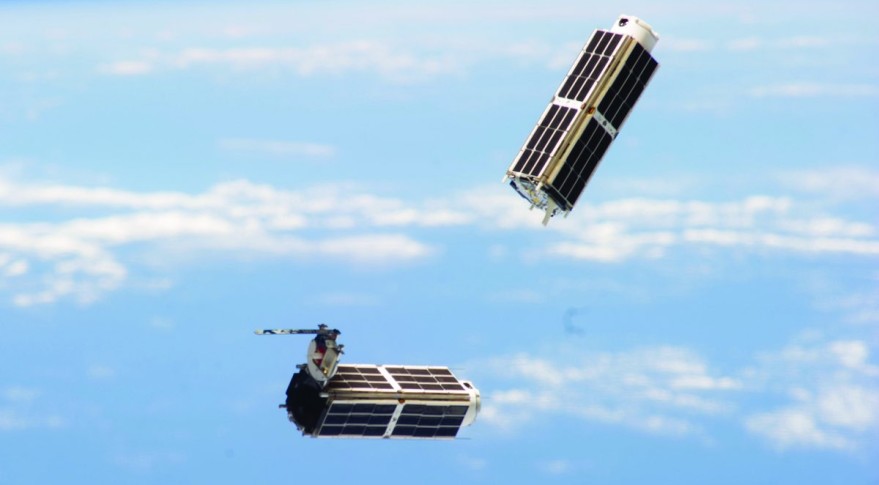With 'Mission 1' Complete, Planet Turns Focus to Data Analysis

Updated Nov. 19 to clarify Planet's work with data analysis partners.
LUXEMBOURG CITY — Having achieved its original goal of taking images of the entire planet every day, Planet is now focusing on developing machine learning capabilities to convert that imagery into actionable, and lucrative, insights.
Speaking at the NewSpace Europe conference here Nov. 17, Kam Shahid, director of space operations for Planet, said the company had achieved "Mission 1" for the company, dating back to its founding seven years ago, of taking images of the Earth's entire landmass once per day.
The bulk of that imagery, he says, comes from the more than 140 operational Dove cubesats, developed in-house at Planet. The company also has five RapidEye medium-resolution satellites it acquired in 2015, and 13 SkySat satellites from the acquisition of Terra Bella, formerly Skybox Imaging, from Google. Six of those satellites launched Oct. 31 on a Minotaur-C rocket, along with four Dove cubesats. [CubeSats: Tiny, Versatile Spacecraft Explained (Infographic)]
That constellation, Shahid said, produces large volumes of data. "This is what imaging the Earth every day really means: 1.4 million images every day at 29 megapixels," he said. Planet downlinks six terabytes of data per day, he said, with a total coverage area of 300 million square kilometers.
With the satellite constellation in place, the challenge for Planet now is to turn the volume of images it produces into data products. "This is what we see for the future for our company, turning data into insights," he said. "We have focused extensively on building a pipeline which can take all of this data, process it and get valuable information out."
That approach, he said, involves the use of machine learning technologies for automated analyses of images. An example he gave was using images to count the number of cars in a lot. The high-resolution images from SkySat images allow the algorithms to count individual cars. In medium-resolution, but more frequent, Dove images, the algorithms can instead measure the area of lots filled by cars, and from that estimate the number of cars.
Get the Space.com Newsletter
Breaking space news, the latest updates on rocket launches, skywatching events and more!
That can be used for a wide range of applications. "The idea is that you can use our imagery and ask questions and get answers," he said. "This is what the future is and this is where Planet is moving. We are moving into analytics."
Planet is not alone in emphasizing analytics. Several other companies are developing systems to transform the rapidly expanding volume of satellite images into data products. Ursa Space Systems raised $7 million in a Series A round last month to expand its products, which are based on synthetic aperture radar imagery it purchases. Other companies in the sector include Descartes Labs, Orbital Insight and SpaceKnow.
Shahid said later that Planet will develop its machine learning capabilities in-house, a philosophy it has followed for its Dove satellites and other key technologies. Customers, he said, would be able to bring in their own data sets to combine with the analysis of Planet imagery. Planet will continue to partner with other companies for analytics, company spokesman Trevor Hammond said Nov. 18, noting it has "numerous paying customers" in such arrangements currently.
"The goal is to provide users ways to get the information they need to make smarter decisions," Will Marshall, the co-founder and chief executive of Planet, said in a company blog post this month about the Mission 1 milestone. "In short, Planet will index physical change on Earth the same way Google indexed the internet. Imagine the possibilities."
This story was provided by SpaceNews, dedicated to covering all aspects of the space industry.
Join our Space Forums to keep talking space on the latest missions, night sky and more! And if you have a news tip, correction or comment, let us know at: community@space.com.

Jeff Foust is a Senior Staff Writer at SpaceNews, a space industry news magazine and website, where he writes about space policy, commercial spaceflight and other aerospace industry topics. Jeff has a Ph.D. in planetary sciences from the Massachusetts Institute of Technology and earned a bachelor's degree in geophysics and planetary science from the California Institute of Technology. You can see Jeff's latest projects by following him on Twitter.










